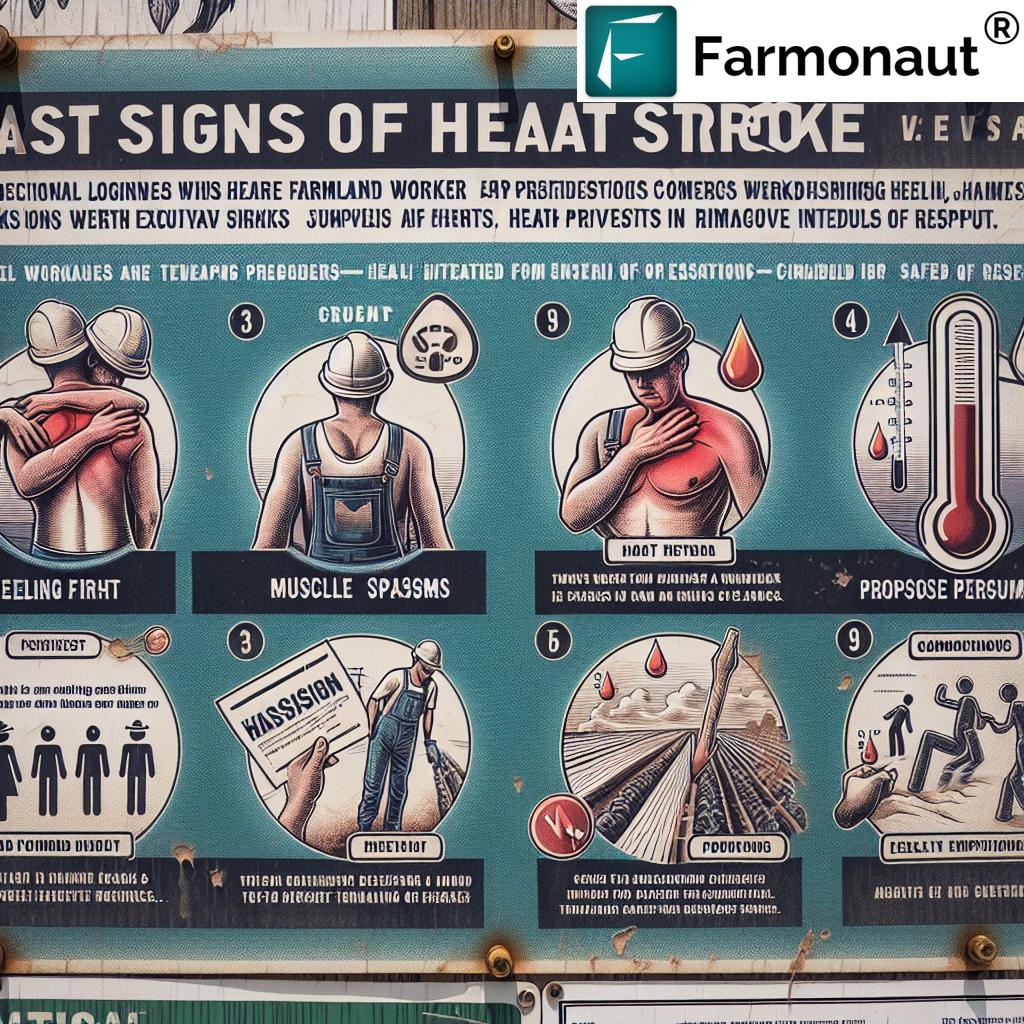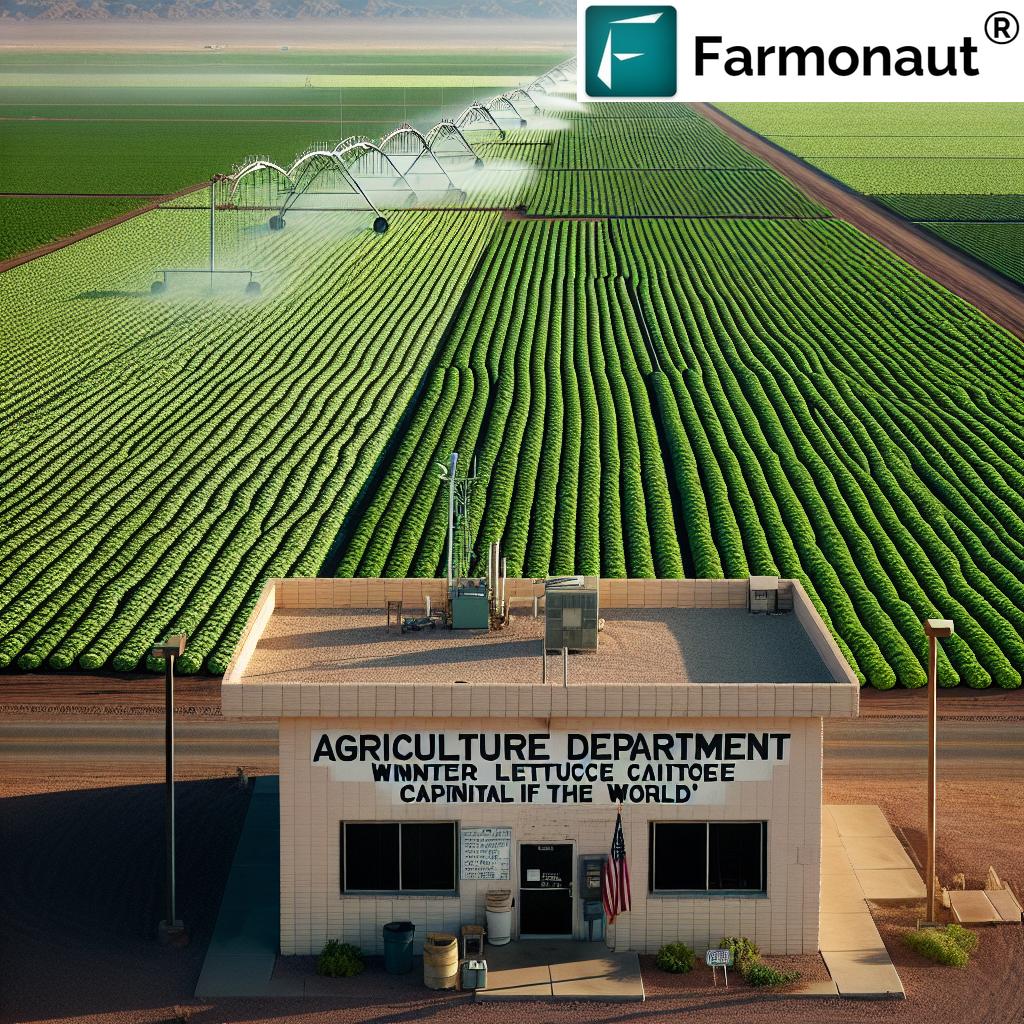Florida Farmworker Suffered Heat Strokes: Safety Guide
“Over 80% of Florida farmworkers face dangerous heat stress during peak summer months, increasing risk of heat stroke.”
Introduction: Why Heat Stroke Prevention is Crucial for Florida’s Farmworkers
Florida’s agricultural sector stands as a cornerstone of the state’s economy, cultivating a diverse array of crops from citrus and tomatoes to leafy greens and sugarcane. At the heart of this success are the dedicated farmworkers who endure long hours in the fields, often under extreme heat conditions. However, these workers face serious health risks linked to the region’s high temperatures, particularly during the spring and summer months when production peaks.
Heat-related illnesses, and most notably heat stroke, are among the most severe dangers, capable of causing fatal outcomes if not recognized and managed quickly. As we strive to ensure both sustainability and productivity within this vital industry, understanding the causes, symptoms, and prevention of heat stress in agriculture is essential for all stakeholders, from employers and workers to regulators and community members.
Let’s delve into the risks Florida farmworkers face, highlight actionable preventive measures, and outline key resources and technologies to help protect the health and reduce the impact of heat-related illnesses in agriculture.
Understanding Heat Stroke and Its Causes
Heat stroke is a severe and potentially fatal medical emergency that arises when the body’s temperature regulation system breaks down due to excessive heat and other environmental factors. When core body temperature rapidly rises—often exceeding 104 degrees Fahrenheit—the health impacts can quickly become life-threatening, with organ damage possible in as little as 15 minutes of continuous heavy labor.
Let’s break down the key causes and risk factors that make Florida’s farmworkers especially susceptible to heat illnesses in agriculture:
1. High Temperatures and Humidity
- Florida’s climate is notorious for sweltering temperatures and high humidity levels, especially in summer months and during harvest seasons.
- Field temperatures can be 8–10 degrees Fahrenheit higher than weather station data suggests—meaning actual worksite heat stress can be extreme.
- Workers who labor in direct sunlight are exposed to higher radiant heat loads, putting them at greater risk for heat-related illnesses.
2. The Physical Demands of Agricultural Work
- Tasks like planting, harvesting, weeding, and processing demand strenuous physical activity, which increases metabolic heat production.
- The human body is already challenged to dissipate excess heat; when combined with high environmental temperatures, heat stress is intensified.
3. Lack of Access to Water and Shaded Rest Areas
- Breaks for rest and hydration are often limited. Some workplaces may lack basic amenities, such as clean drinking water or designated shaded areas.
- There are reported cases of workers being charged for bottled water. Unequal or paid access to hydration can heighten heat illness risks.
4. Economic Pressures and Piece-Rate Pay
- Many farmworkers are compensated based on the quantity of crops picked (piece-rate pay), which can incentivize non-stop labor.
- This financial pressure discourages taking breaks, further increasing the body’s risk of overheating, dehydration, and developing heat stroke.
5. Barriers to Preventive Measures
- Language barriers, lack of training, and limited access to health education programs can prevent workers from recognizing and responding to the early symptoms of heat illness.
- Some employers lack effective heat illness prevention programs or fail to follow OSHA recommendations regarding heat safety.
Heat Stress in Agriculture: Risks for Florida Farmworkers
Florida’s climate presents unique risks for those in agricultural
work. As our state experiences sustained temperatures above 90°F (32°C), the impact on farmworkers increases—especially during long, high-intensity labor tasks such as harvesting and planting. In this section, we explore what makes Florida’s fields particularly hazardous during summer months and why addressing these concerns is a central part of sustaining the agricultural industry.
-
High Temperatures in Florida Fields:
- Field temperatures often exceed 100°F (38°C) in summer, while heat index (temperature & humidity combined) makes it feel even hotter.
- This magnifies the risk of heat accumulation in the body during strenuous activity.
-
Humidity and Its Effects:
- High humidity hinders the sweating process—our natural way of dissipating heat—to evaporate body warmth efficiently.
- When sweat cannot evaporate, internal body temperature rises rapidly.
-
Radiant Heat and Sun Exposure:
- Direct sun increases heat load beyond shade or indoor work.
- Long-term exposure, particularly without adequate shade, is linked to high incidence of heat stress in agriculture workers.
-
Physical Exertion:
- The crop production cycle means many tasks are labor-intensive, exposing workers to long periods of high exertion when fieldwork cannot be rescheduled.
- Even experienced farmworkers can be caught off guard by the sudden onset of heat stroke after a period of heavy labor.
Given these dynamics, preventing heat-related illnesses starts with awareness, early intervention, and the use of science-based safety strategies adapted for the realities of Florida’s agricultural fields.
“Heat stroke can occur in farmworkers within just 15 minutes of heavy labor under extreme Florida heat conditions.”
Recognizing Heat Stroke Symptoms in Workers
Key to protecting workers from heat is the fast and accurate identification of heat stroke symptoms in workers. The faster these symptoms are recognized, the sooner appropriate medical action can be taken—often making the difference between full recovery and severe or fatal outcomes.
We must educate all agricultural stakeholders about the early signs of heat stress and illness.
Most Common Symptoms Reported Among Florida Farmworkers:
- Heavy Sweating: 66% of surveyed farmworkers reported excessive sweating during fieldwork.
- Headaches: 58% experienced persistent or worsening headache.
- Dizziness and Confusion: 32% reported sudden dizziness, 30% noted muscle cramps or spasms.
- Nausea & Vomiting: Growing nausea, which may precede more serious heat illness.
- Muscle Cramps: Painful tightening, often in the arms, legs, or abdomen.
- Rapid Pulse: Elevated heart rate with a lack of sweating can signal heat stroke.
- Confusion, slurred speech, or loss of consciousness: Signs that immediate emergency attention is needed.
If any of these symptoms appear suddenly during field work in hot weather, workers should be removed from the field, moved to a shaded area, given water, and medical assistance should be sought immediately.
Consequences of Heat Stroke Among Farmworkers
The impact of heat stroke reaches far beyond the individual body—it affects entire families, communities, and the agricultural industry itself. Understanding these repercussions highlights the urgency of farmworker heat illness prevention.
Short-Term Health Implications:
- Organ failure: Prolonged high body temperature can lead to irreversible damage to kidneys, liver, brain, and heart.
- Neurological Effects: Confusion, loss of consciousness, or even death in severe cases.
- Hospitalization: Serious heat illness often results in extensive (and expensive) medical care and lost wages.
Long-Term and Economic Impact:
- Chronic Health Risks: Repeated exposure or unaddressed heat stress can cause lasting cardiac, neurological, and musculoskeletal complications.
- Economic Burden: Lost productivity—each incident of heat illness means fewer crops picked, higher turnover, and increased healthcare and liability costs for employers.
- Legal Risk: The Occupational Safety and Health Administration (OSHA) has cited employers failing to provide appropriate heat illness prevention programs, leading to fines and possible reputational damage.
These consequences reinforce the necessity of implementing and enforcing robust safety measures for workers in the fields.
Heat Stroke Risk and Prevention Comparison Table
| Risk Factor | Estimated Exposure Rate Among Florida Farmworkers (%) | Common Symptoms Observed | Recommended Prevention Measures |
|---|---|---|---|
| High Temperature (>100°F in Fields) | 90% |
|
|
| High Humidity | 80% |
|
|
| Direct Sunlight (No Shade Provided) | 75% |
|
|
| Heavy Labor/Strenuous Activity | 60% |
|
|
| Lack of Access to Drinking Water | 30% |
|
|
| Insufficient Breaks or Shade | 40% |
|
|
Farmworker Heat Illness Prevention: Key Safety Measures
The most effective strategy to counter heat stroke and related illnesses lies in applying proven preventive measures at both the individual and employer level. Here’s what all members of the agricultural community in Florida need to know and implement to strengthen agricultural worker safety measures and foster a culture of prevention.
-
Hydration for Farmworkers:
- Provide cool, clean drinking water near all work areas—free of charge.
- Encourage workers to drink approximately one cup every 15–20 minutes during field work, not just when thirsty.
- Avoid beverages containing alcohol, excessive caffeine, or large amounts of sugar.
-
Rest Breaks and Shaded Areas:
- Schedule work to avoid peak heat-hours (10:00 a.m. – 4:00 p.m.) if possible.
- Establish shaded rest areas nearby—no further than a few minutes’ walk.
- Mandate extra breaks during intense sun/humidity or after periods of heavy exertion.
-
Acclimatization:
- Gradually increase time spent working in heat over 10–14 days for new or returning workers.
- Closely monitor newcomers for heat illness symptoms.
-
Appropriate Clothing:
- Wear light-colored, loose-fitting, breathable clothing to help facilitate sweat evaporation and heat loss.
- Wide-brimmed hats and sunglasses help protect against direct solar exposure.
-
Early Recognition and Response:
- Provide all workers with standardized training to recognize and report heat stroke symptoms.
- Empower teams to initiate emergency procedures if symptoms are identified.
For more advanced field oversight, precision agriculture tools—such as Farmonaut’s real-time crop health monitoring and weather alerts—can inform supervisors about dangerous climate trends and optimal rest intervals. Read more here: Large Scale Farm Management App for maximizing worker and crop safety with the power of satellite technology.
Remember: Preventing heat-related illnesses means prioritizing safety on a daily basis—before, during, and after all high-risk field activities.
The Role of Training and Education in Preventing Heat-Related Illnesses
No prevention program can be successful without ongoing education and training. All farmworkers—whether seasonal, temporary, or long-term—should receive simple, language-accessible training on the causes, symptoms, and responses for heat-related illnesses.
-
Typical Training Topics:
- What is heat stroke?
- Recognizing early symptoms in self and others
- Proper hydration practices
- When and where to take breaks
- How to alert supervisors & call for medical help
-
Benefits of Training:
- Lowers the risk and frequency of emergency incidents
- Empowers workers to advocate for safer work conditions
- Compliance with state, federal, and industry regulations
The Association of Farmworker Opportunity Programs (AFOP) offers valuable training resources and materials to support education for both farmworkers and employers on heat stress in agriculture.
Policy and Advocacy Efforts for Outdoor Worker Safety in Summer
Protecting workers from heat is not only a moral imperative, but increasingly a legal obligation. Comprehensive legislative and regulatory measures are vital to creating lasting change for the safety of workers in the Florida agricultural sector.
Key Developments and Legislative Actions
- Federal Rulemaking: The Biden administration proposed a groundbreaking federal rule requiring employers to appoint heat safety coordinators and implement response procedures for heat illness symptoms. Read more about this rule here.
- Advocacy Groups: Non-profits and farmworker associations have lobbied for mandatory heat protection, including required access to drinking water and rest shade, along with stricter enforcement of outdoor worker safety in summer.
- Research Partnerships: Ongoing studies by groups like the Farmworker Association of Florida and partnering universities are crucial for tracking prevalence, risks, and effective interventions in the field. See recent research here.
Collectively, these initiatives empower both workers and employers to prioritize health and contribute to the broader sustainability of the state’s agricultural industry.
Farmonaut: Technology to Support Farmworker Safety and Sustainability
As we look toward the future of farmworker health in Florida’s evolving climate, leveraging advanced technology can make a significant difference in minimizing heat illness risks, improving productivity, and ensuring the sustainability of our agricultural sector.
What is Farmonaut?
- Farmonaut offers cutting-edge, satellite-based farm management solutions through Android, iOS, and web apps, as well as API integrations. Its core mission is to make precision agriculture accessible and affordable, providing actionable data and real-time insights for effective resource management.
- With features including crop health monitoring, AI-driven advisory (like Jeevn AI), and real-time weather forecasts, Farmonaut helps farmers and agricultural businesses adapt to the unique climate risks for farm labor in regions such as Florida.
- Blockchain-based traceability, traceability of agricultural products, and carbon foot-printing capabilities help promote sustainability and increase trust across the supply chain.
How Farmonaut Can Help Florida Farmworkers and Employers
-
Real-Time Weather & Crop Health Monitoring:
- Identifies areas experiencing heat stress, predicts environmental risks, and optimizes task scheduling to reduce exposure at peak heat.
-
Resource Management Tools:
- Efficient use of water (supporting hydration for farmworkers), shade requirements, and labor force allocation.
-
AI-Based Advisory:
- The Jeevn AI system provides location-specific insights, alerting supervisors when heat index values are unsafe for prolonged activity, and suggesting optimal breaks and clothing strategies.
-
Field-Level Insights for Large Operations:
- Available for both individual growers and large agribusinesses, supporting the health of all workers.
Key Farmonaut Solutions for the Florida Agricultural Community
-
Large Scale Farm Management
Manage crop areas, analyze field conditions, proactively plan labor, and protect workers using comprehensive satellite data. -
Carbon Footprinting Solutions
Helps track, manage, and reduce the environmental impact of agricultural activities—a key step for farm businesses aiming for sustainability. -
Fleet & Resource Management
Optimize vehicle usage, ensure field support/logistics for timely water and break access, and cut costs. -
Crop Loan and Insurance Verification
Provides satellite-based verification that improves access to finances for farmers while reducing the risk for financial institutions. -
Farmonaut Satellite API
Integrate weather and satellite insights directly into your in-house systems for agricultural worker safety measures and efficient field management. -
API Developer Docs
Technical documentation for seamless integration with your business’ data dashboards, workforce apps, or IoT-enabled equipment.
Frequently Asked Questions (FAQ)
-
What is heat stroke, and why are Florida farmworkers at such high risk?
Heat stroke is a life-threatening condition occurring when the body fails to cool itself. Florida’s high temperatures, humidity, and intense sun exposure—combined with strenuous fieldwork and barriers to breaks and hydration—greatly increase the risk for farmworkers.
-
How can employers in Florida fields prevent heat stress in agriculture?
Employers should supply readily accessible water, schedule shifts to avoid peak heat, enforce frequent shaded breaks, offer heat illness training, and use crop/weather monitoring tools for early risk detection.
-
What are early symptoms of heat-related illnesses in workers?
Early signs include heavy sweating, headache, muscle cramps, nausea, dizziness, and confusion. Immediate rest and hydration can prevent progression to heat stroke.
-
Is there technology to support worker safety from heat in agriculture?
Yes, precision agriculture platforms like Farmonaut provide real-time crop and weather data, enabling employers to better schedule work, rotate tasks, and respond to high-risk days before illnesses occur.
-
Does the state of Florida have laws protecting outdoor workers from heat?
While federal OSHA guidelines exist and new legislative proposals are in discussion, not all necessary protections are currently required by state law. Advocacy continues to strengthen these standards for all farmworkers.
-
How can workers protect themselves if no water or shade is provided?
Workers should raise concerns with supervisors and seek assistance from advocacy organizations. In emergencies, prioritizing personal safety by stopping work, seeking available shade, and calling for medical help is critical.
-
Who is responsible for providing training on heat illness prevention?
Employers are generally responsible; however, industry groups like the Association of Farmworker Opportunity Programs (AFOP) also offer valuable resources for both employers and employees.
-
What makes Farmonaut’s technology unique for agricultural worker safety?
Farmonaut’s real-time, satellite-driven insights, actionable alerts (via Jeevn AI), and user-friendly mobile and web app interfaces make it easy to monitor risk, plan safe field activities, and protect both crops and people efficiently and affordably.
Conclusion: Prioritizing Health for a Sustainable Florida Agricultural Sector
Florida’s agricultural fields are at the front lines of climate risk, but our farmworkers should never be on the frontlines of preventable heat illnesses. By understanding the causes and symptoms of heat-related health emergencies, implementing robust prevention measures, advocating for stronger policies, and leveraging advanced precision agriculture tools like those from Farmonaut, we can dramatically reduce heat stroke incidents.
Protecting the health and safety of farmworkers is both a human and economic imperative. It secures the future of Florida’s agriculture industry and ensures the sustainability—and dignity—of everyone who labors in our fields.
Empower your farm, elevate your safety. Try Farmonaut’s crop and risk management solutions today to protect your workers and your yields.


















